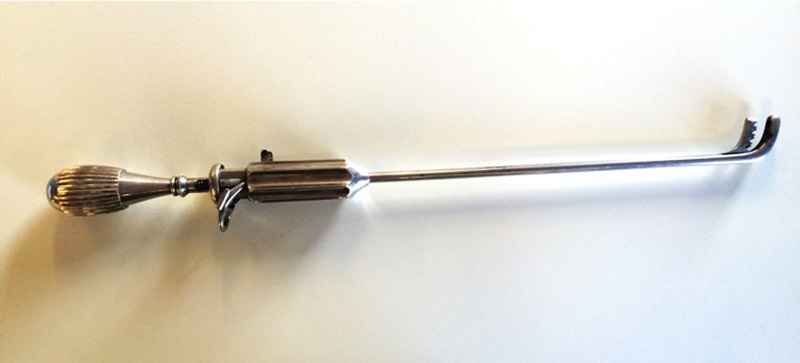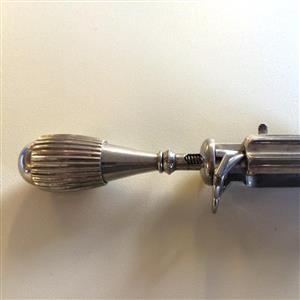Virtual Museum
Lithotrites
Used for Litholapaxy

This type of blind lithotrite was invented in 1878 by Henry Bigelow, an American surgeon. It was bigger than previous blind lthotrites because, in 1872, FN Otis had demonstrated that the male urethra was much larger than previously thought, at 32Ch.

Bigelow utilised this information and employed the new chloroform anaesthesia to break bladder stones and wash out the fragments in one sitting.
The bulbous handle (pictured right) differs from the wheel type of handle seen in the English blind lithotrite.
This new operation was named litholapaxy by his friend, Oliver Wendell Holmes, the American physician and author (from the Greek, λιθος = stone, and λαπαξειν = to crush or wear away).
The pieces were washed out using a Bigelow's evacuator.
← Back to Lithotrites